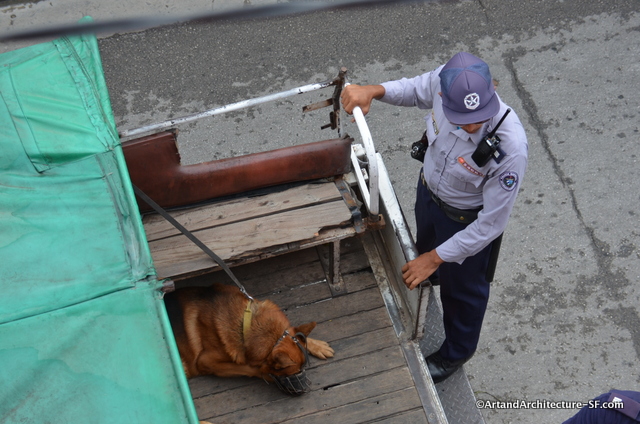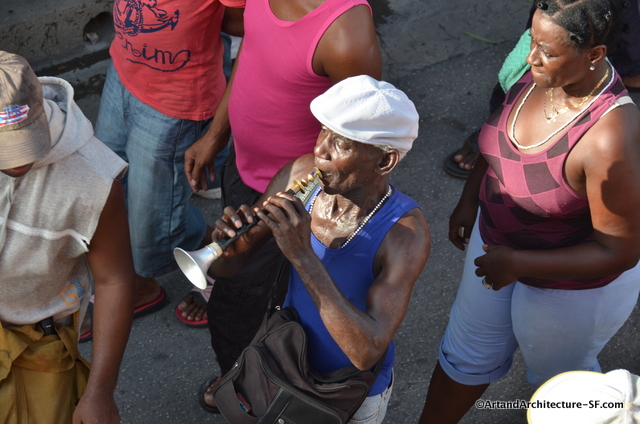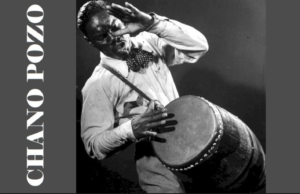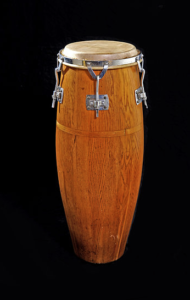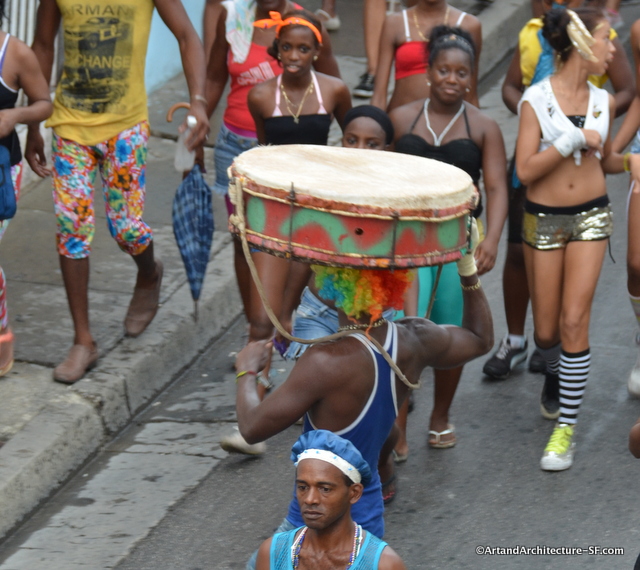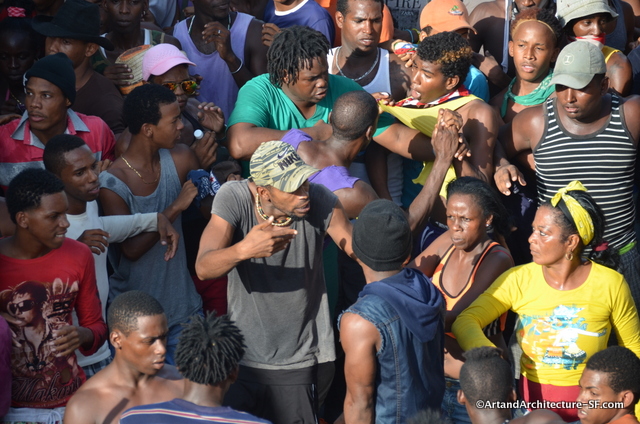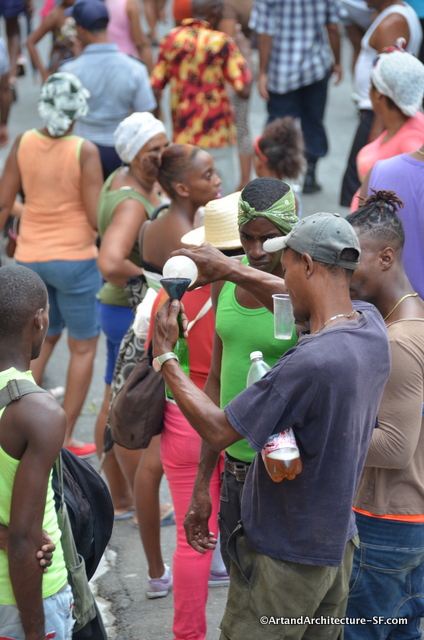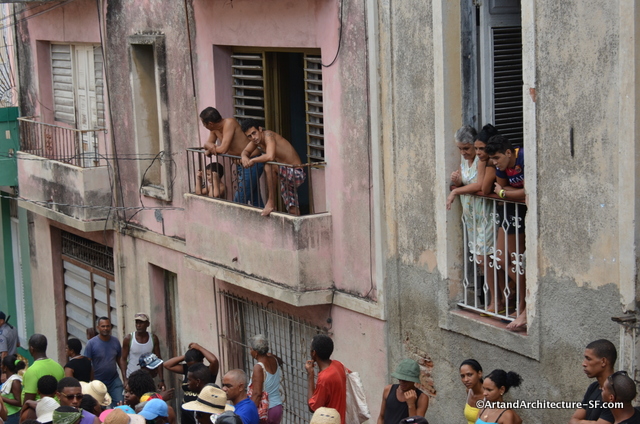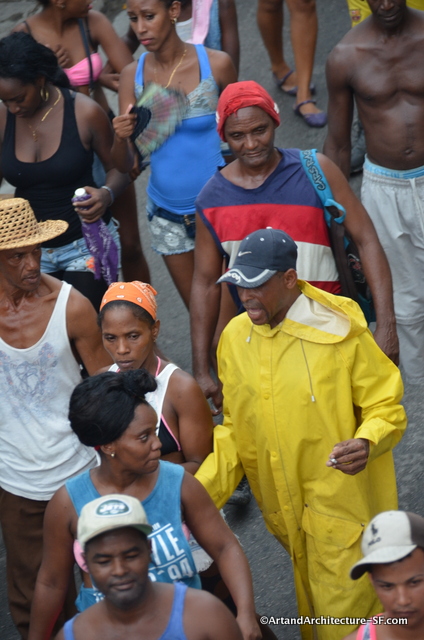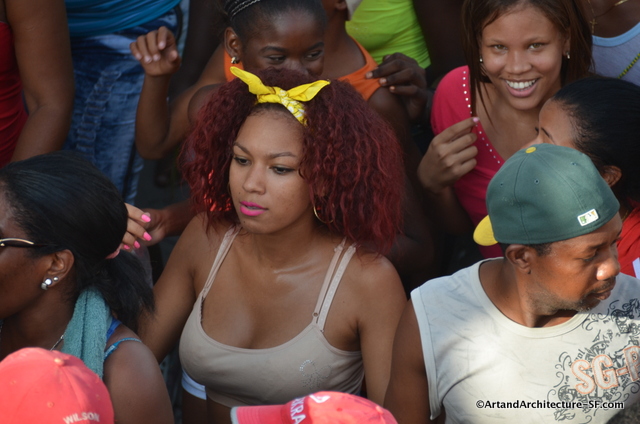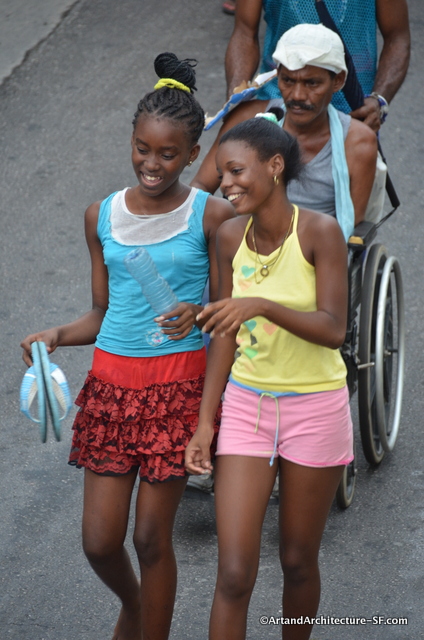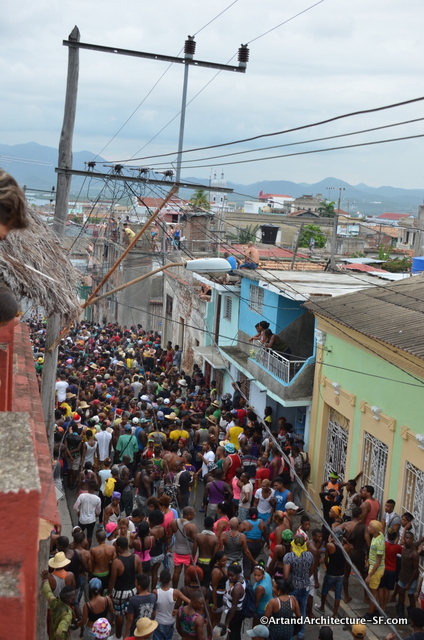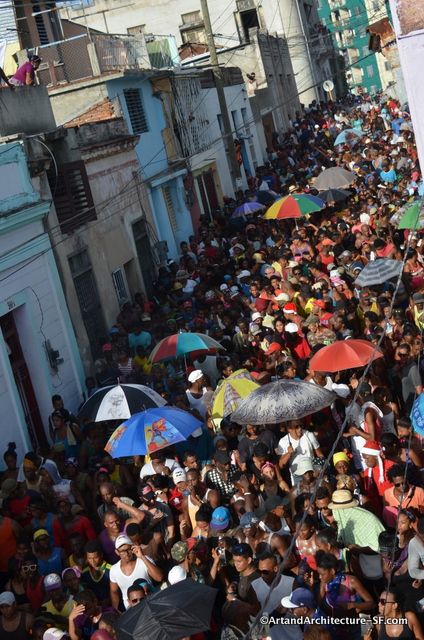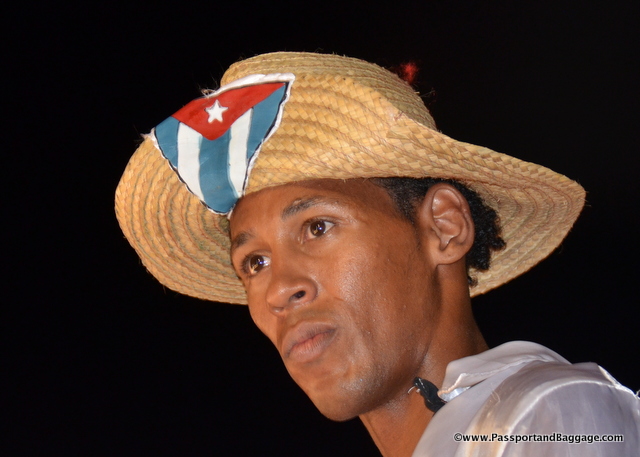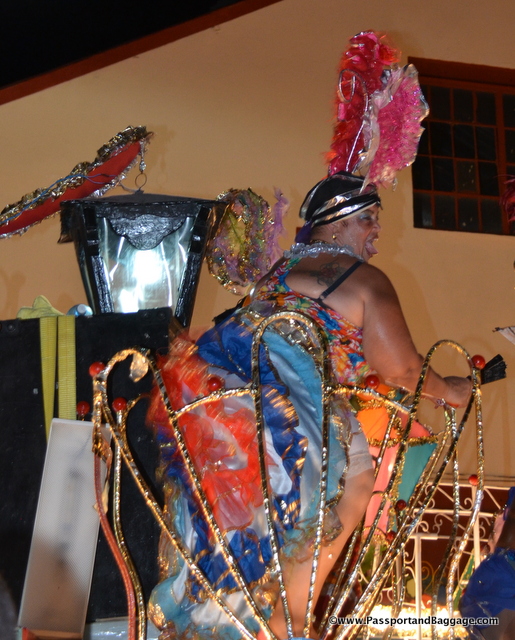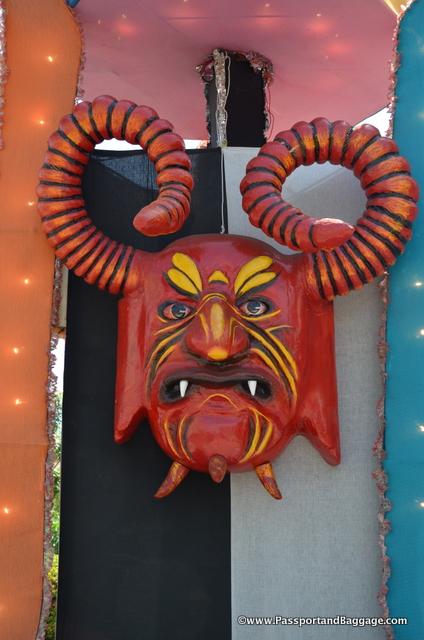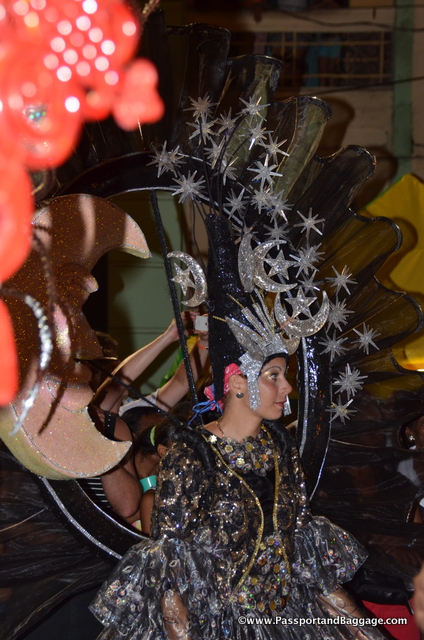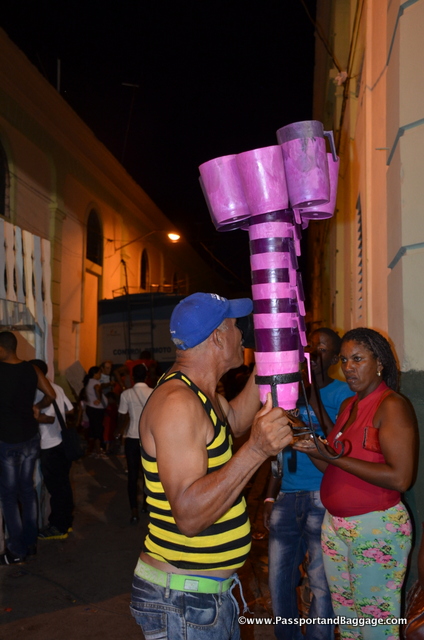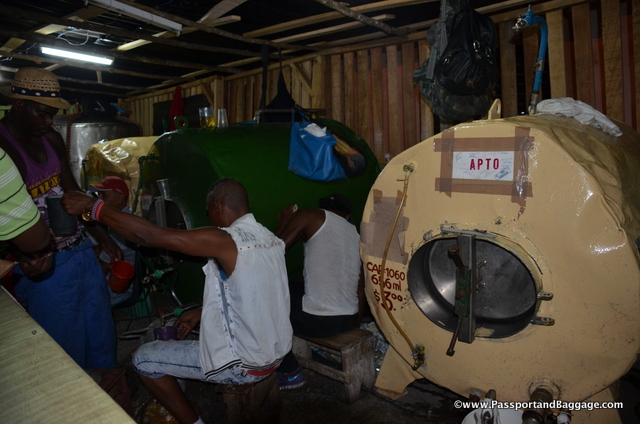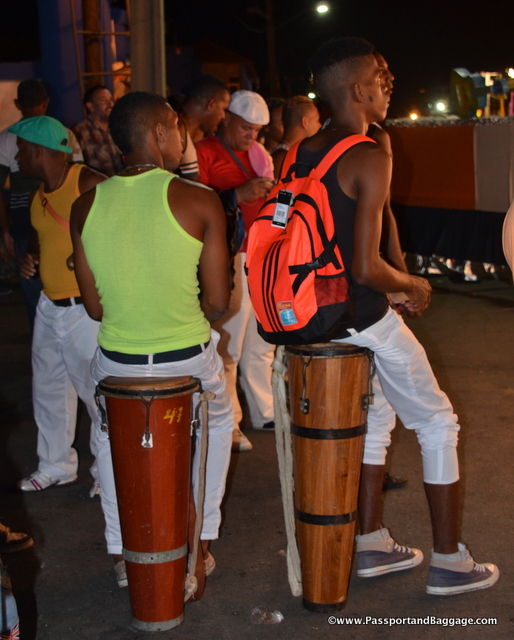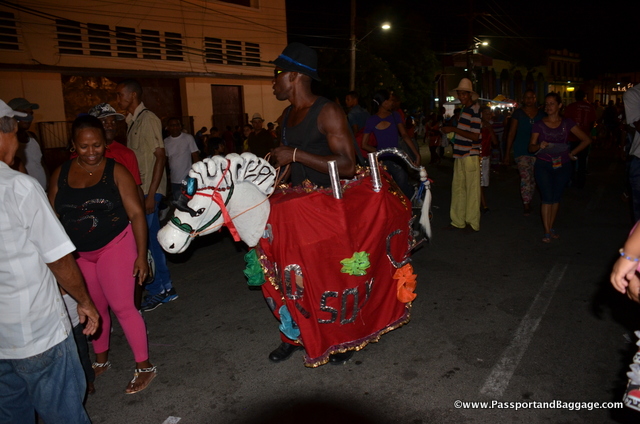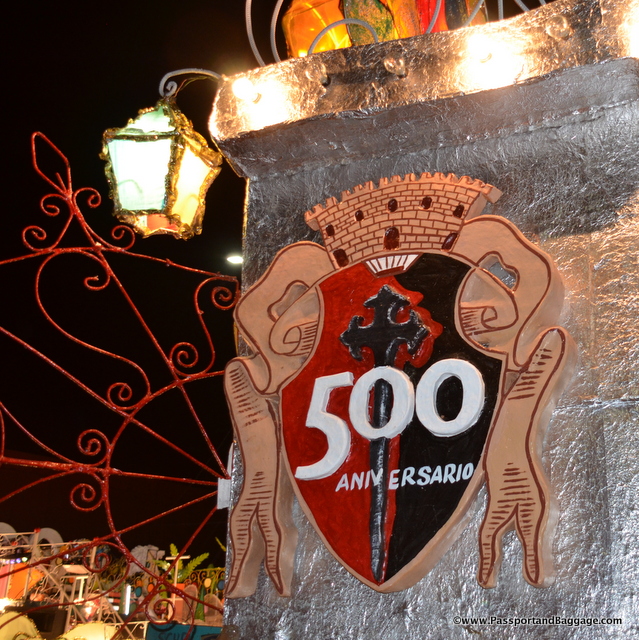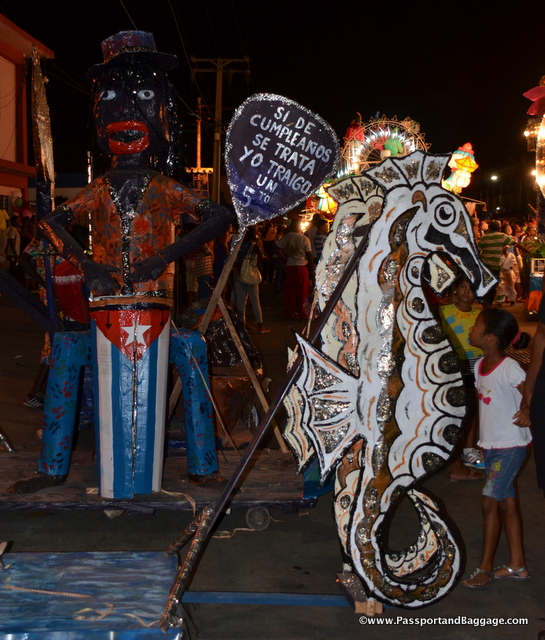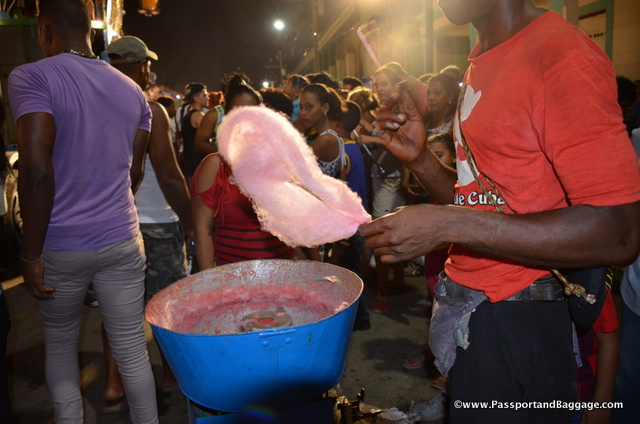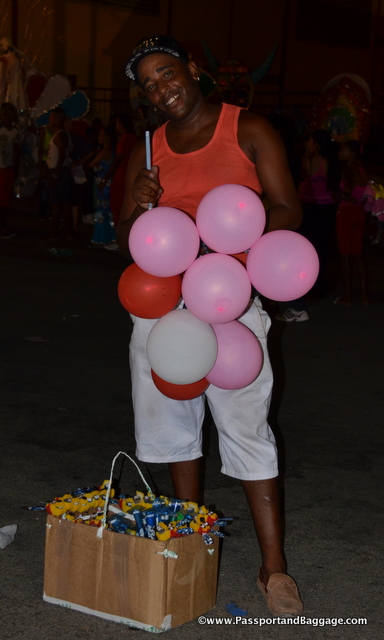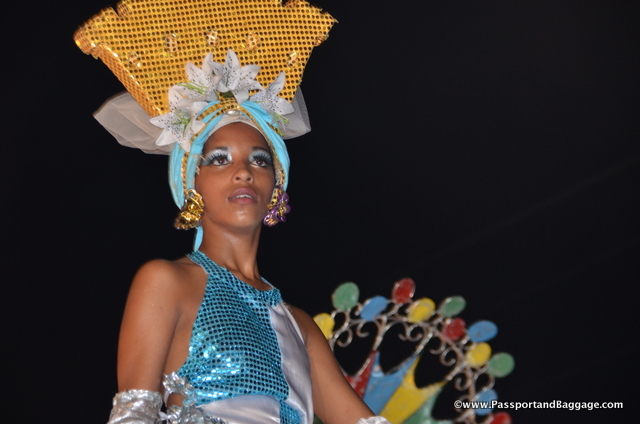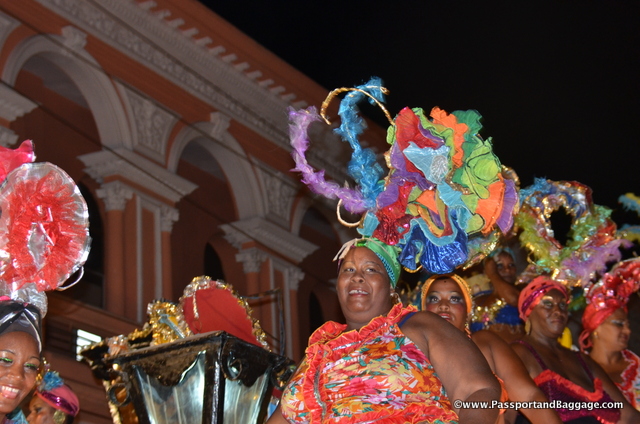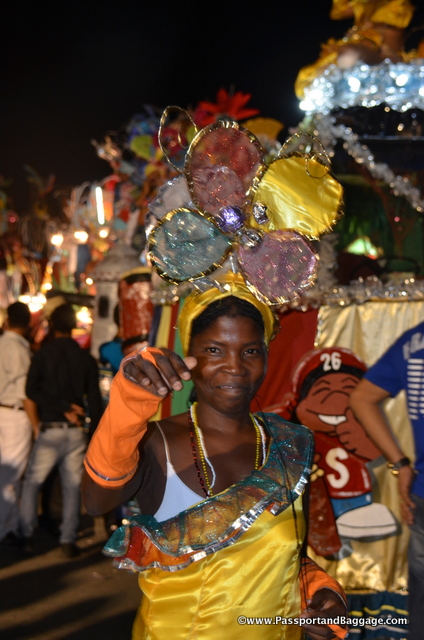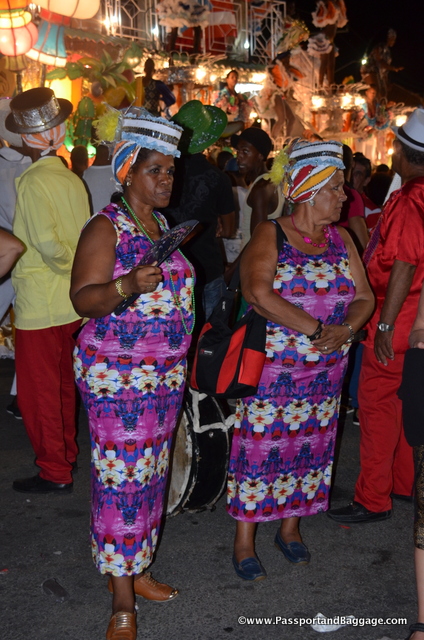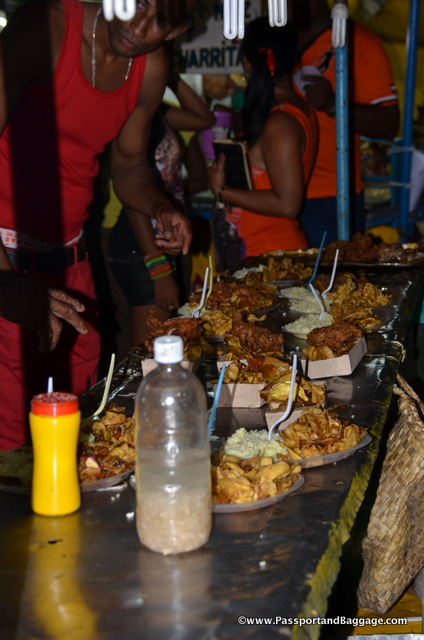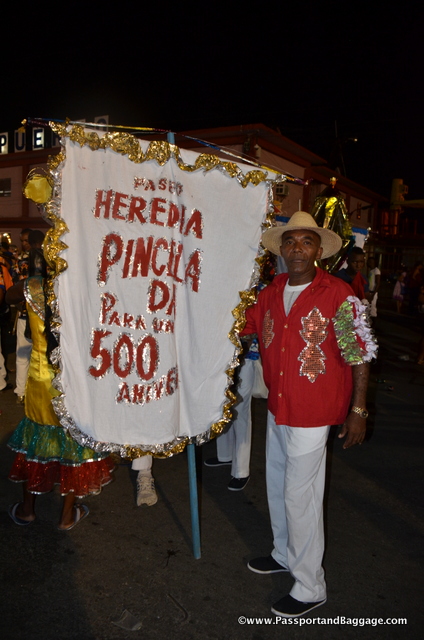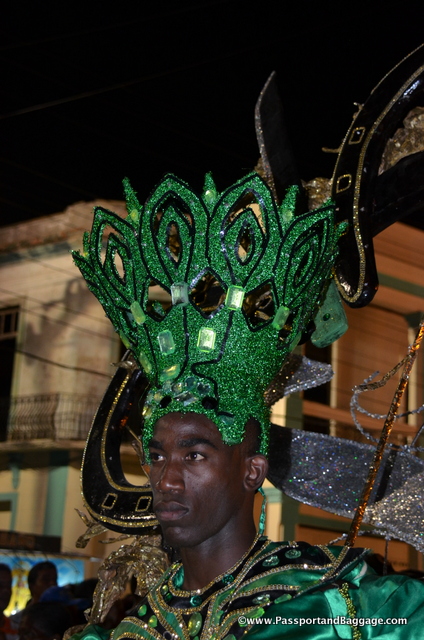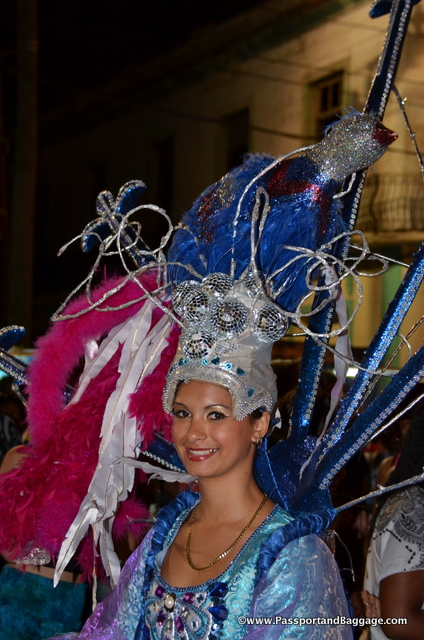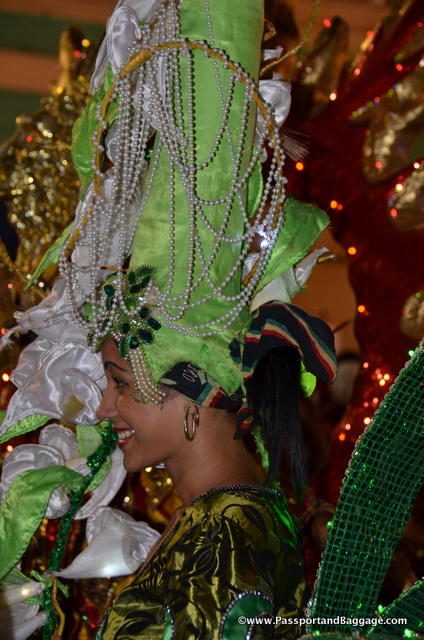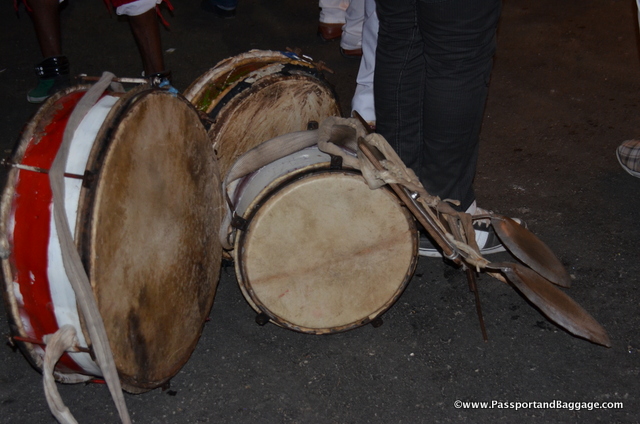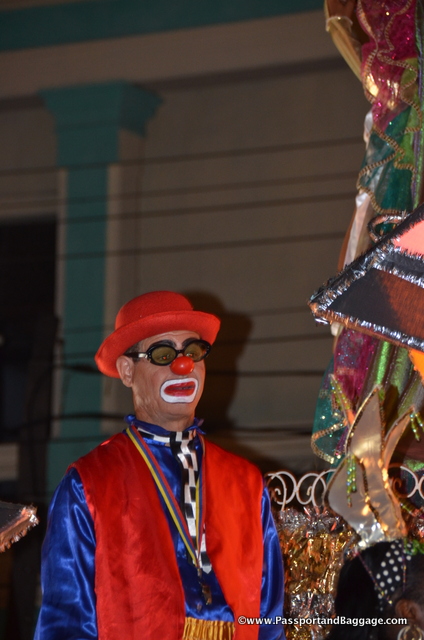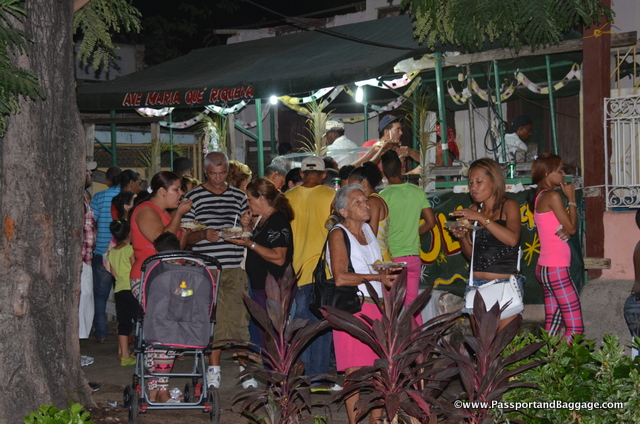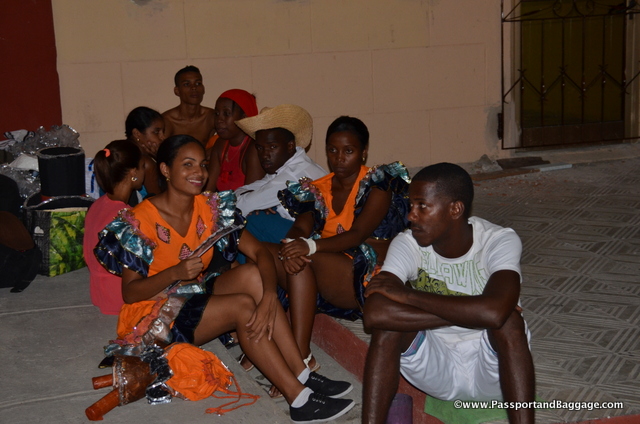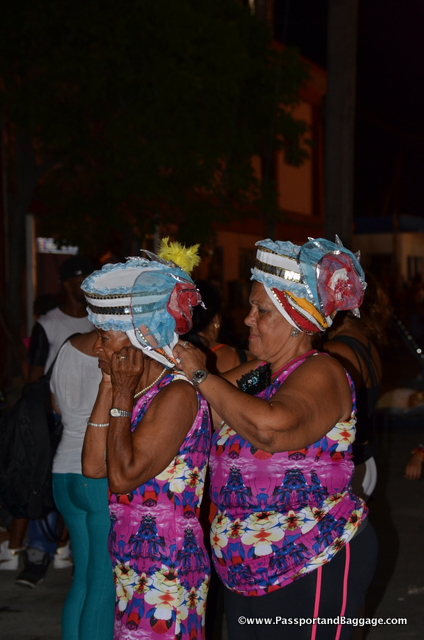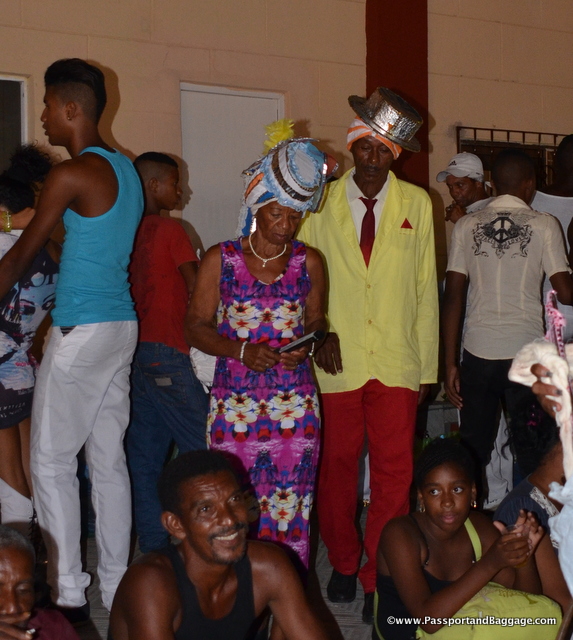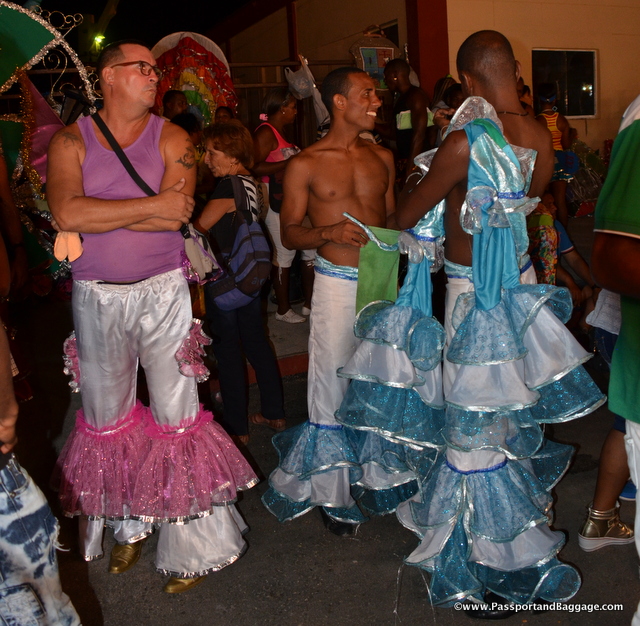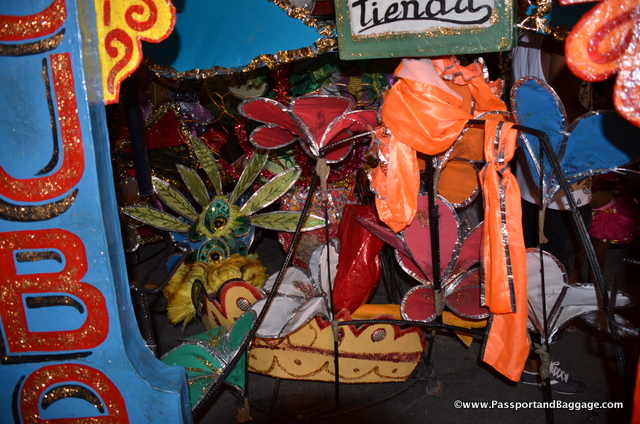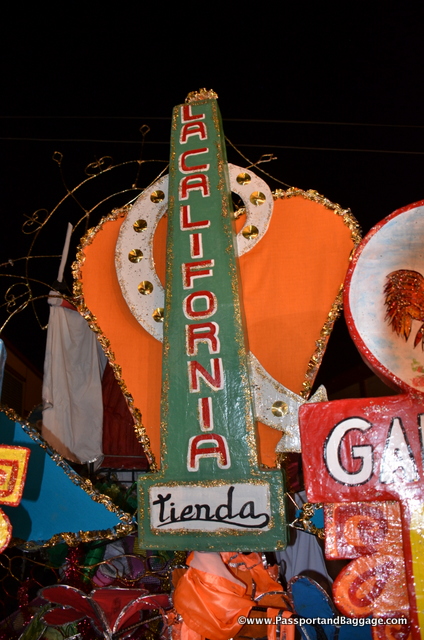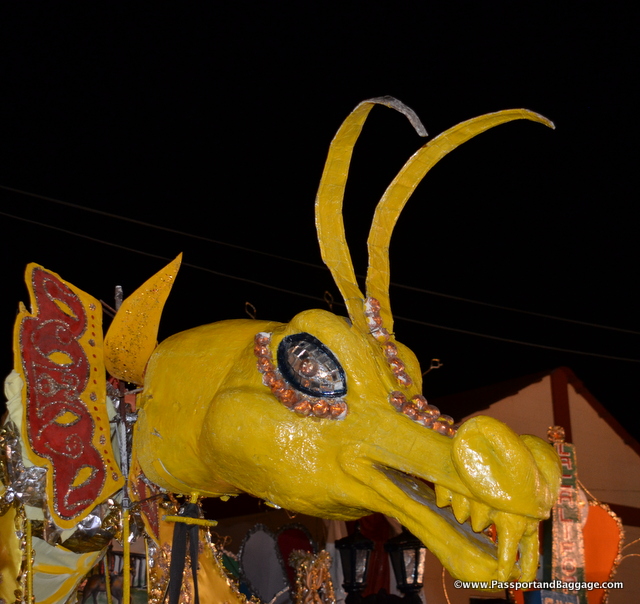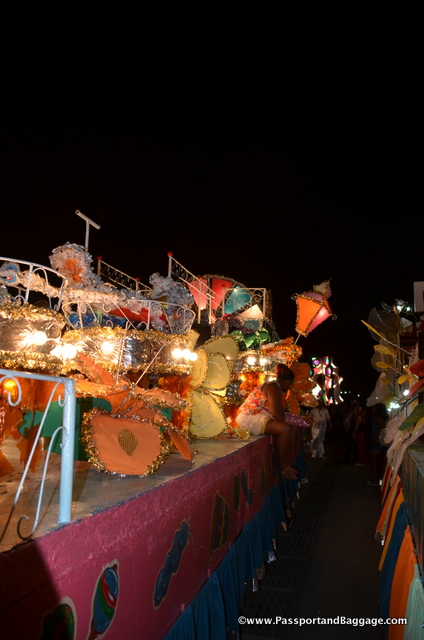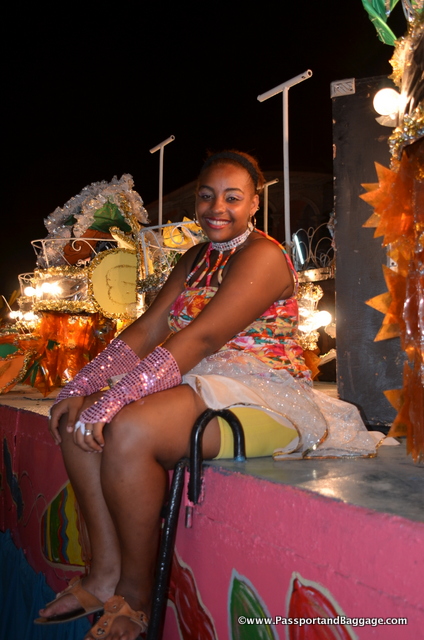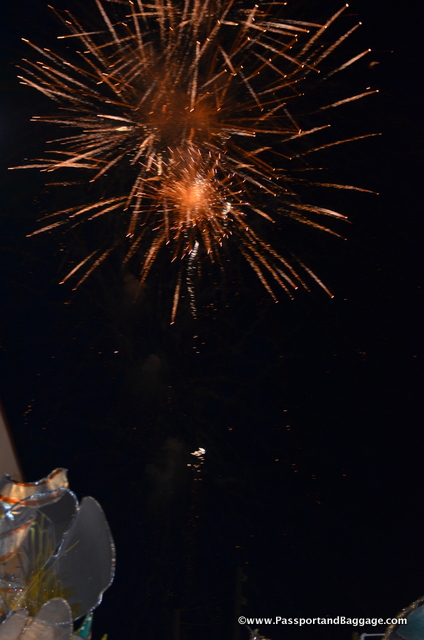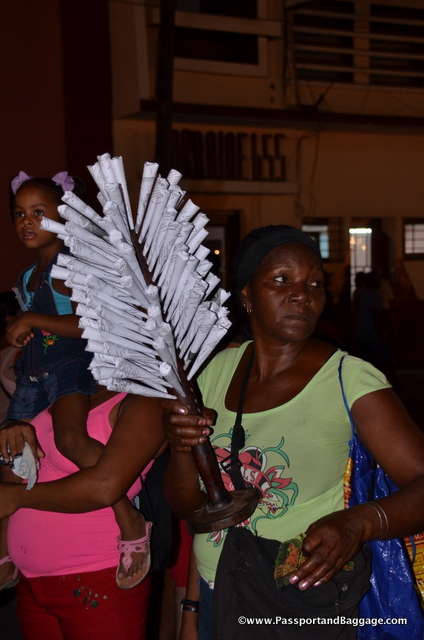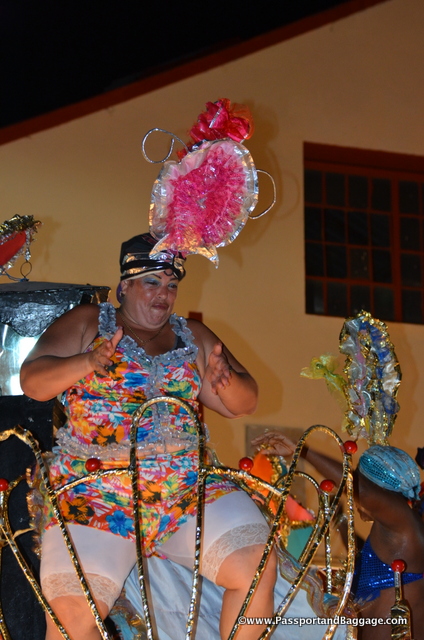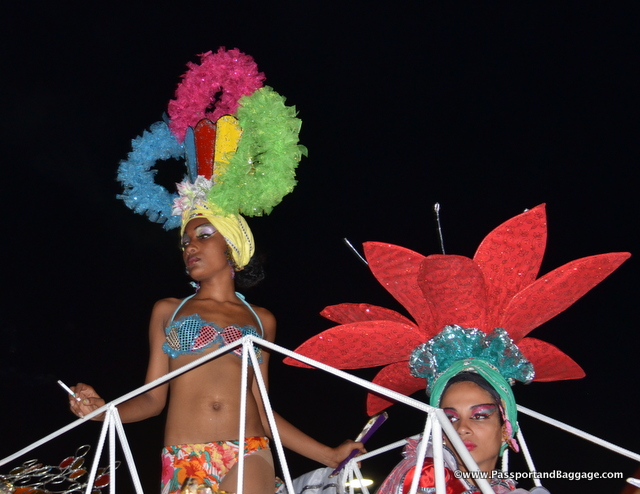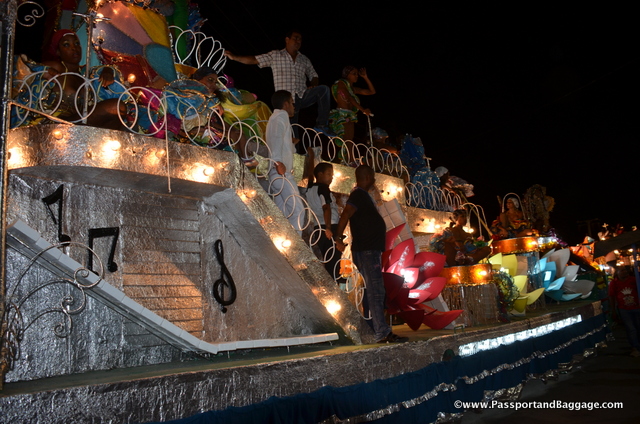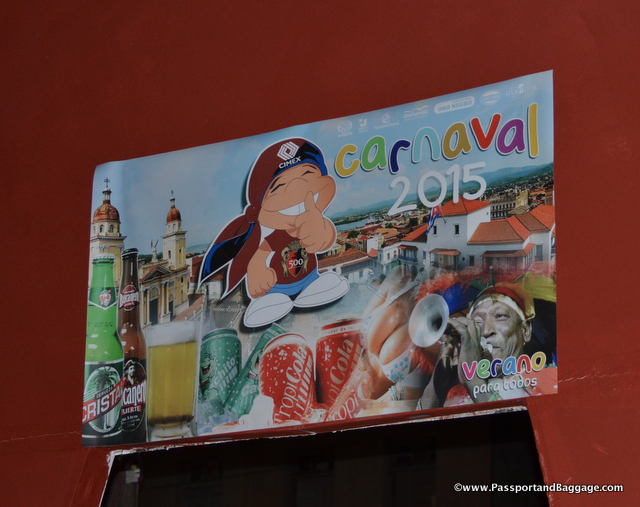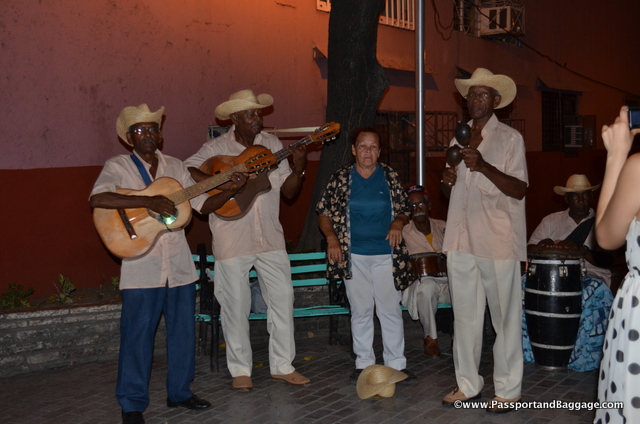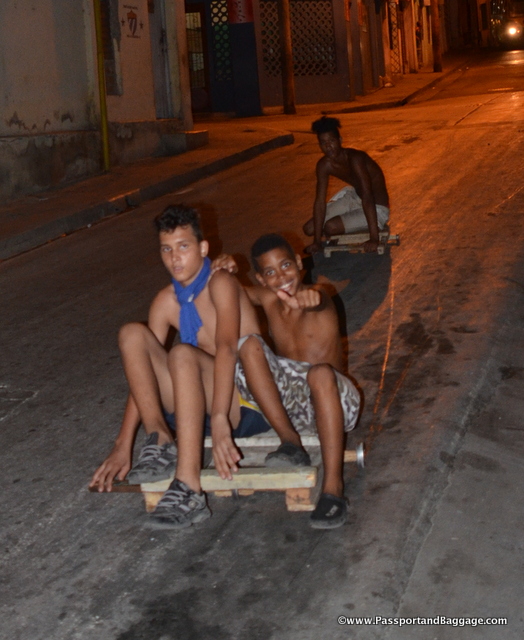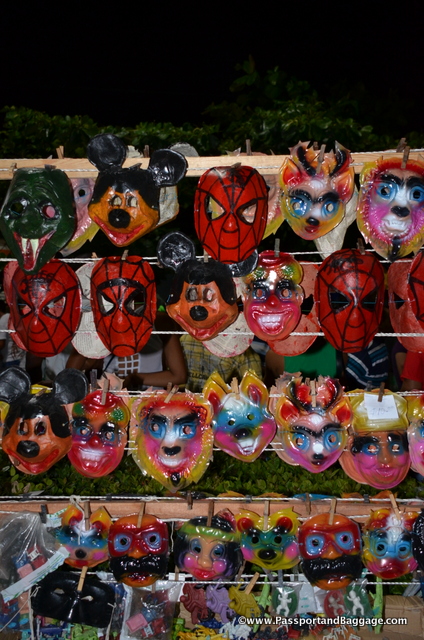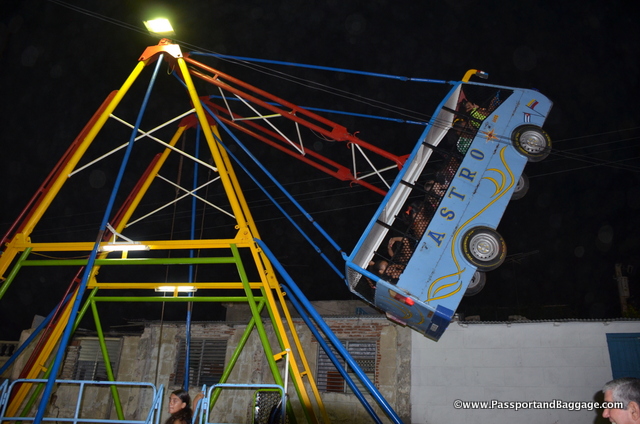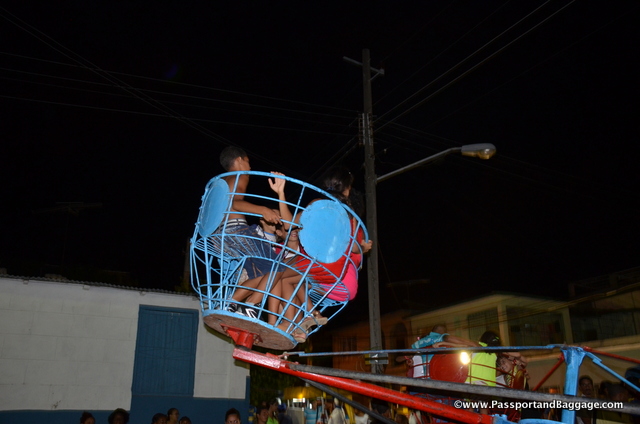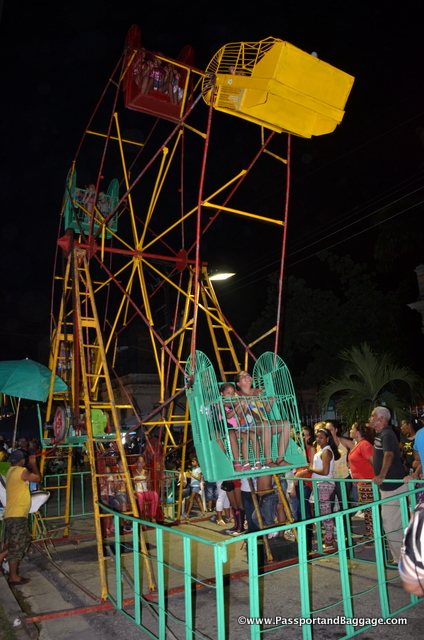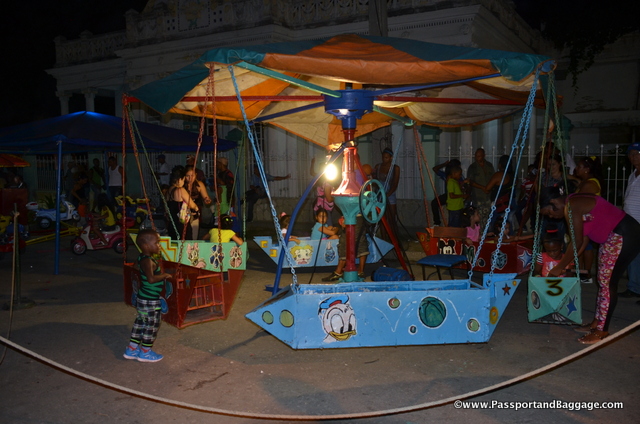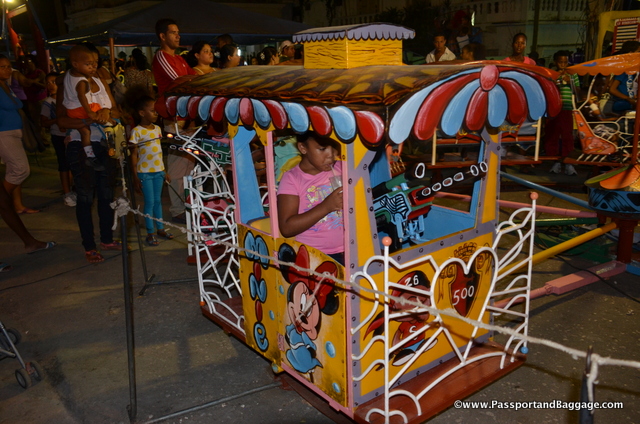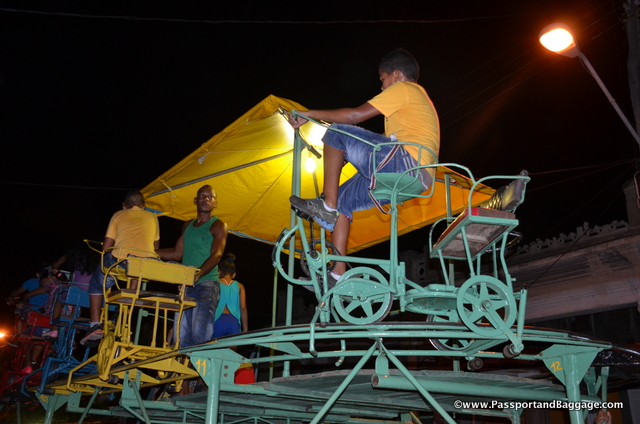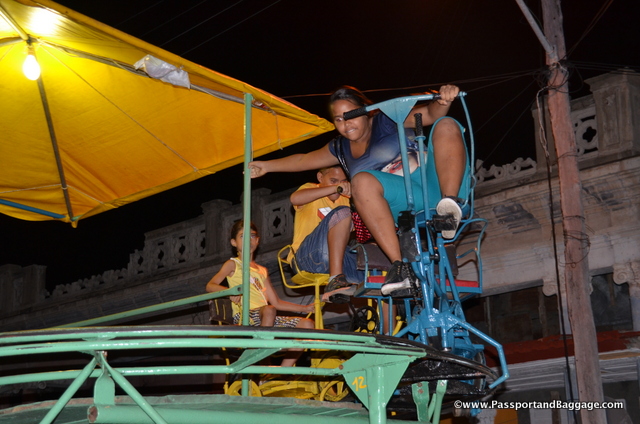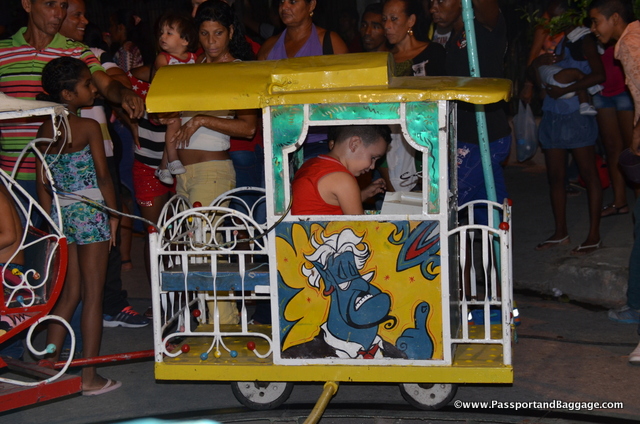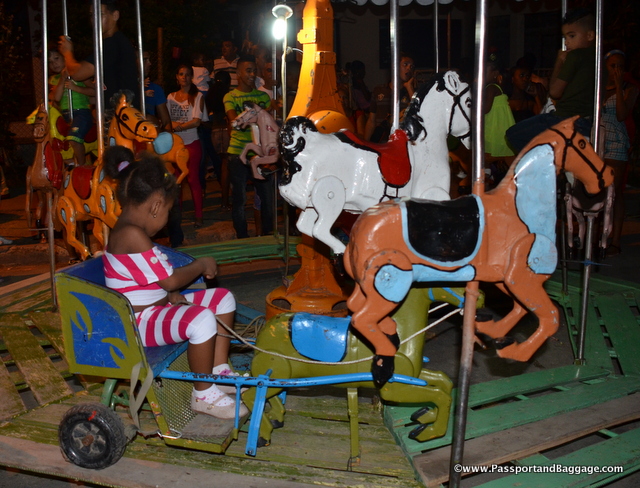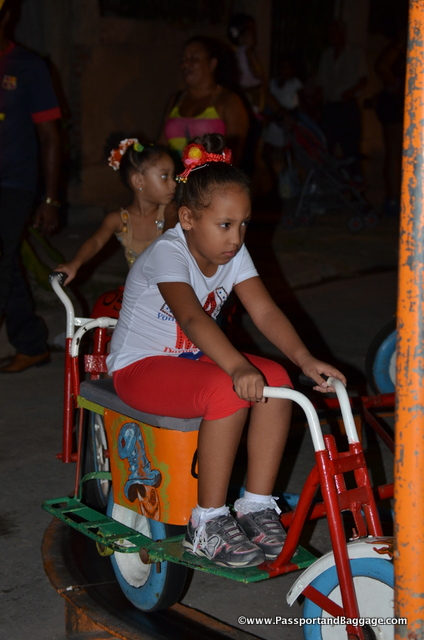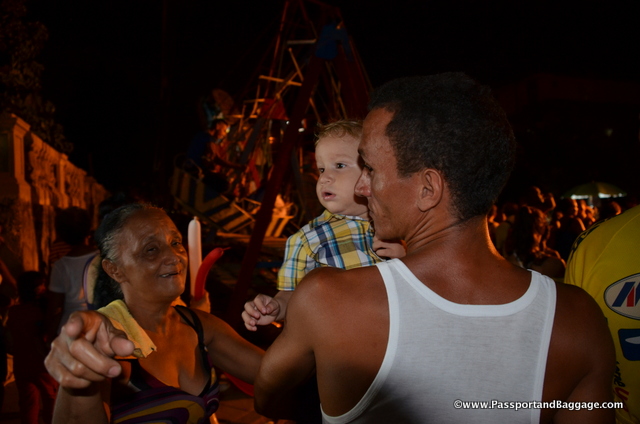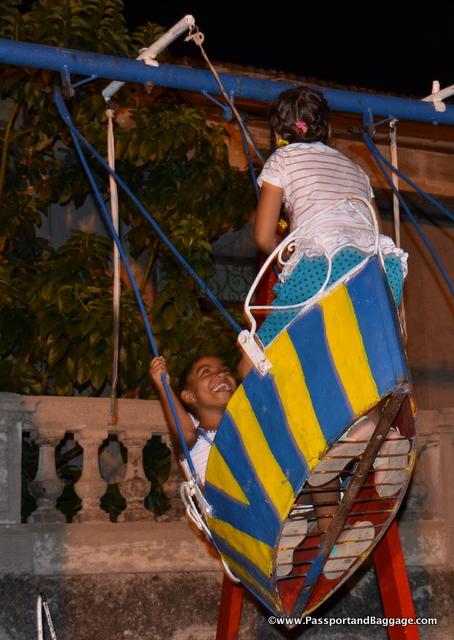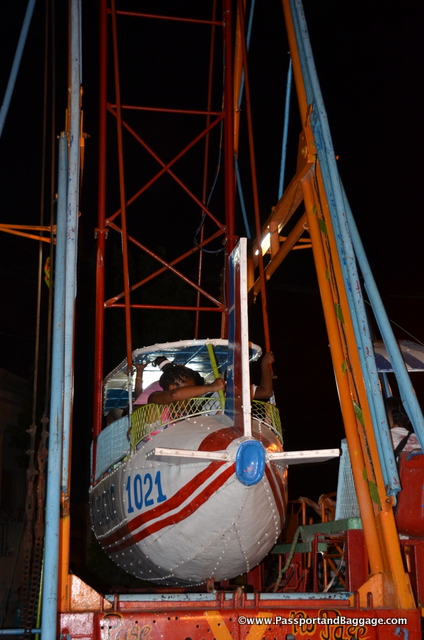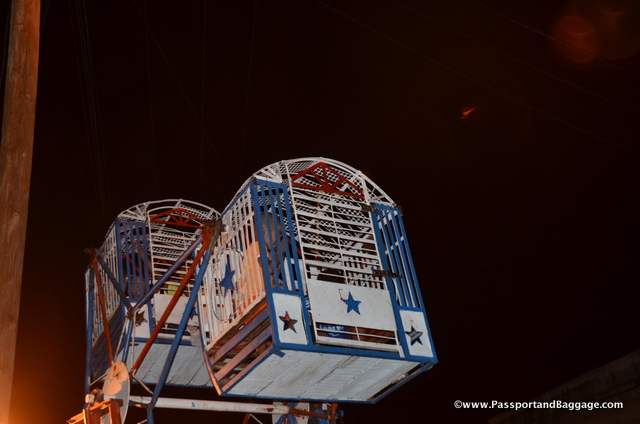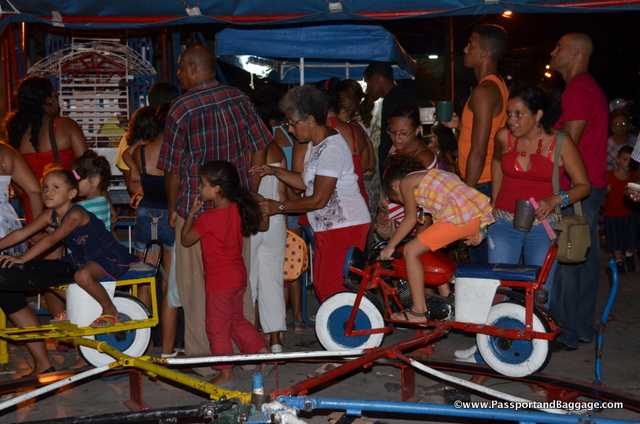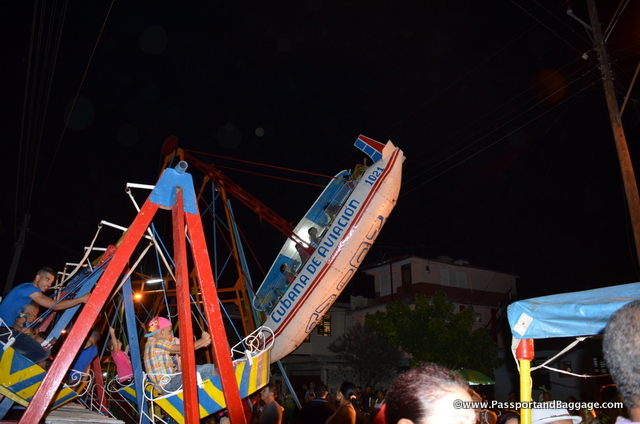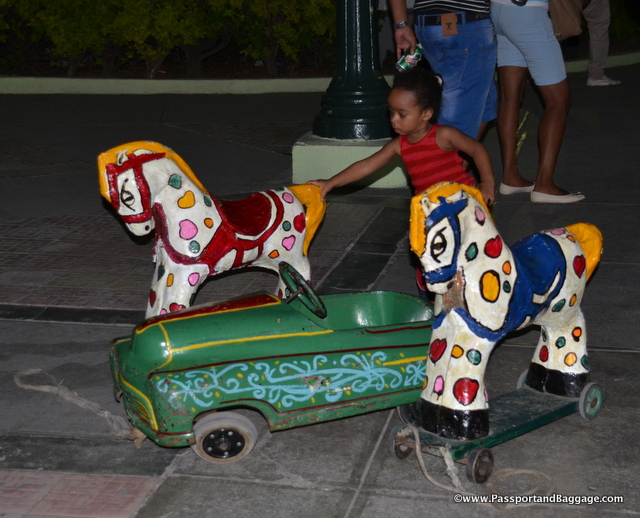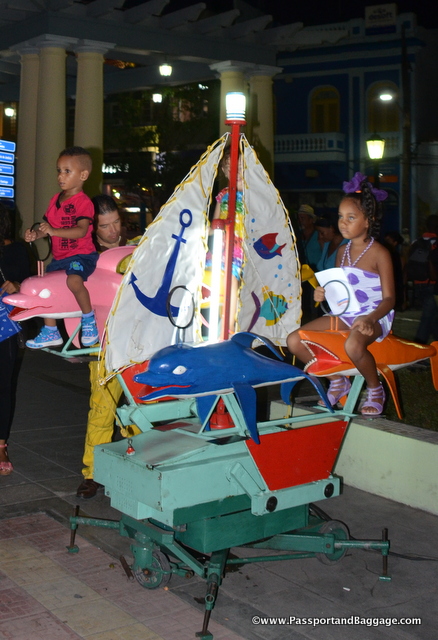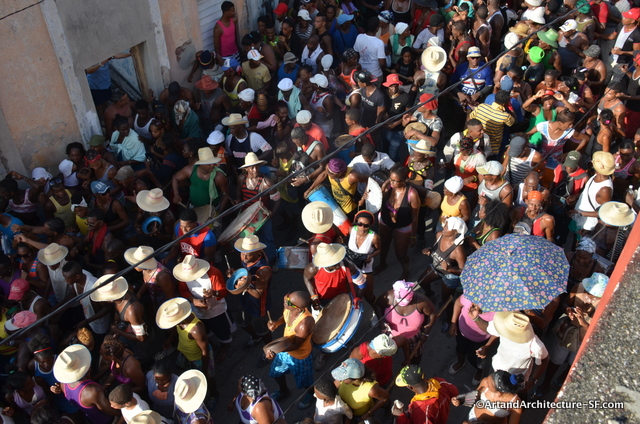 Americans think of the Conga as a kitschy dance done in a line. It is a very different thing in Cuba. During the weeks leading up to Carnival, the streets fill with the Conga on any given day at any given time.
Americans think of the Conga as a kitschy dance done in a line. It is a very different thing in Cuba. During the weeks leading up to Carnival, the streets fill with the Conga on any given day at any given time.
The Conga is both a drum (traditionally called a tambore or tambadora) and a dance.
The dance originated in Santiago de Cuba, exactly when and how, is not really known, although documentation traces it back to at least 1902. It is said that the Conga was appropriated by politicians during the early years of the republic in an attempt to appeal to the masses before the election. During the Machado dictatorship citizens were forbidden to dance the conga because rival groups would work themselves to high excitement and explode into street fighting, some things never change. When Batista became president in the 1940s, he permitted people to dance congas during elections, but a police permit was required. Today police still accompany the Conga dances.
*
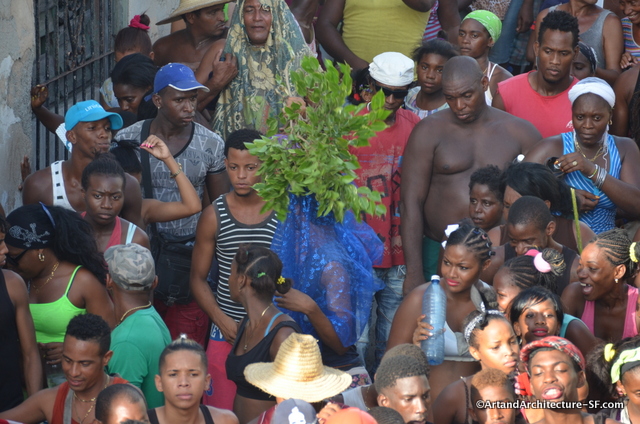
The use of costumes or props is personal, and not necessarily representative of anything in particular
The Santiago de Cuba Conga is slightly different than the Conga of Havana.
These differences are in the instruments. The Santiago de Cuba Conga or Congas Santiagueras includes the Chinese cornet, an instrument in the oboe family introduced to Cuba by Chinese immigrants during the colonial period (specifically the late nineteenth century). .
The Congas of Havana or the Congas Habaneras do not have the Chinese coronet, but do have trumpets, trombones and saxophones with a few cowbells and frying pans thrown in for good measure.
The drums used can be complicated. These are variations on African drums that have been altered over the years as to be unrecognizable from their original form. This description is of the traditional Cuban tambores.
There are three tambores : one requinto and two galletas. The requinto is shaped somewhat like a snare drum- about 50% wider than it is tall. It is hung from the left shoulder with the top of the drum slightly skewed to the left and is played with a stick on the right-hand. The galletas are like bass drums, but flatter. They are both played with a stick in a manner similar to the requinto, except that they are hung from the shoulders in such a way that the skins are nearly horizontal to the ground. The higher pitched of the two is called a redoblante. The lower-pitched galleta is called a pilón.
However, often the drums will be whatever form makes noise.
The Conga today is a mass of humanity and noise. People pour into the streets and follow the music. The Conga itself is just a few small steps, and a feeling of movement, so the street is not so much filled with dancing as with rhythm and energy.
If you are interested in getting a feel for the sounds of the Conga here is a short video.
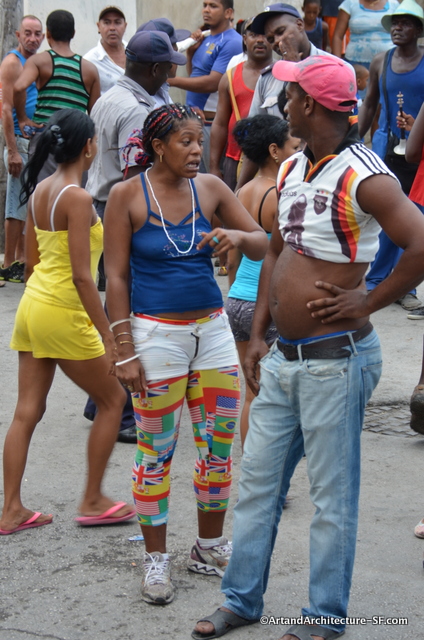
The choice of clothing is as colorful as Cuba. This is a typical way for a Cuban to wear a shirt on a hot day.
*
